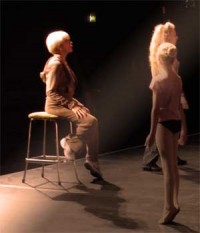
I could have picked any number of examples, but this is one that I remember most from the times I’ve worked with Gillian Lynne because it’s so darn simple. Somebody in the studio was attempting to describe the way two steps in the solo that Gillian had created needed to run smoothly together. It was a perfectly rational and articulate description of what needed to happen and why and how and so on.
But in the middle of it, Gillian just offered the single word ‘elision’ without appearing to even think about it, and in a second, there was no point in continuing the explanation, because ‘elision’ was exactly what it was.
I don’t think I’d heard or used the word ‘elision’ since my French O level classes. Once you know that you have to do it, you don’t need to know what it’s called. Out of sight, out of mind. So it amazed me that this relatively obscure, specialized word should have dropped so immediately into her mind quicker than someone else could explain the concept.
And then a few months ago, I found a transcript of a speech by Sir Ken Robinson detailing an interview he’d had with Gillian Lynne about how she started dancing. She describes her first experience of being at a dance school as a liberation, because she was with other people “who had to move to think”. Of course. It’s a wonderful concept (as wonderful as ‘elision’ in reference to movement) and I heartily recommend reading the whole story, which is available online in this pdf – the relevant bit is on pages 35-37, or just search for ‘Gillian Lynne’.

